ML has been changing how organizations and businesses are doing their decisions, data analysis, and service delivery. Being a machine learning engineer, data scientist, or a business leader means that interactions are defined as data scientists must comprehend the tools used in machine learning projects to achieve successful work.
What is Machine Learning?
Machine learning is an area in the enormous field of artificial intelligence that deal with creating systems capable of learning out of the information and becoming more adept over the period. Machine learning models learn patterns in data and based on this learning make predictions or decisions instead of being explicitly programmed with rules. ML has found diverse applications in such areas as:
-
Predictive analytics: Anticipating future trends based on historical data.
-
Natural Language Processing (NLP): Understanding and generating human language (e.g., chatbots, language translation).
-
Computer vision: Enabling machines to recognize objects and make sense of images and videos.
-
Recommendation systems: Suggesting products, services, or content based on past behavior.
Look for in AI Tools for ML Projects
| Feature | Explanation |
|---|---|
| Ease of Use | The tool should have an intuitive interface, comprehensive documentation, and user-friendly design to ensure easy adoption. |
| Scalability | As your ML project grows, your tool should be able to scale to handle large datasets and complex models. |
| Performance Optimization | The tool should allow for model fine-tuning and performance evaluation, helping you optimize the results. |
| Integration | Choose tools that integrate well with other systems like databases, cloud platforms, or collaborative tools. |
| Support and Community | A robust support system and an active community ensure that you get help when needed and can share insights with other users. |
With such characteristics in mind, you would be able to guarantee that the AI tools that you choose when working on your machine learning projects would be efficient and convenient to your needs.
Top AI Tools for Machine Learning Projects
The list of tools that could be used to facilitate machine learning is very long and each has its peculiarities and areas of use. The following are some of the best AI tools in machine learning projects:
1. TensorFlow
TensorFlow, a framework of machine learning created by Google, is an open-sourced framework that gained popularity to be regarded as one of the most commonly used options when it comes to creating and deploying machine learning models. It offers a diverse selection of products in everything; deep learning, predictive analytics etc.
-
Use Cases: Deep learning, neural networks, computer vision, natural language processing.
-
Strengths: Highly flexible, robust ecosystem, support for both research and production environments.
-
Weaknesses: Steeper learning curve compared to other tools like Keras.
| Feature | Details |
|---|---|
| Pricing | Free (Open-source) |
| Best For | Deep learning, neural network modeling |
| Integration | Excellent integration with various tools such as Keras, and Google Cloud |
2. PyTorch
Another popular framework of this kind is PyTorch by the AI Research lab at Facebook: it is an open-source machine learning framework. It is characterized by a dynamic computation graph that is why it is an excellent research and development choice.
-
Use Cases: Computer vision, NLP, reinforcement learning, deep learning.
-
Strengths: Dynamic graph, user-friendly, and flexible.
-
Weaknesses: Slower model execution compared to TensorFlow for large-scale deployments.
| Feature | Details |
|---|---|
| Pricing | Free (Open-source) |
| Best For | Research, deep learning models, flexible prototyping |
| Integration | Easily integrates with many data science and ML frameworks |
3. Keras
Keras is a neural networks API written in Python and executing on top of TensorFlow, with help of which it is possible to prototype deep learning models quickly and easily.
-
Use Cases: Prototyping, fast model-building, deep learning.
-
Strengths: Simple and easy-to-understand API, excellent for quick prototyping.
-
Weaknesses: Lacks some advanced features that TensorFlow offers, especially for production-grade models.
| Feature | Details |
|---|---|
| Pricing | Free (Open-source) |
| Best For | Rapid prototyping and building deep learning models |
| Integration | Integrates with TensorFlow, Theano, and other backend engines |
4. Scikit-Learn
One of the most popular machine-learning open-source libraries is Scikit-Learn, which is well-known in its simplicity and efficiency. It is perfect in terms of data analysis, data classification, regression, and cluster duties.
-
Use Cases: Data analysis, predictive modeling, clustering, regression.
-
Strengths: Extensive collection of algorithms, simple API, well-documented.
-
Weaknesses: Not ideal for deep learning tasks or neural networks.
| Feature | Details |
|---|---|
| Pricing | Free (Open-source) |
| Best For | Traditional machine learning algorithms like decision trees, support vector machines |
| Integration | Integrates well with data handling libraries like Pandas and NumPy |
5. Google Cloud AI
Our collection of Google Cloud tools support AI and machine learning it is the comprehensive set of Artificial Intelligence and Machine Learning tools that can assist you to scale your machine learning models and then deploy them on Google cloud. It offers end-to-end services automating the intricate aspects of machine learning to simplify life to the developers.
-
Use Cases: Large-scale machine learning model deployment, data analysis, and processing.
-
Strengths: Fully-managed environment, scalable, integrates well with other Google Cloud services.
-
Weaknesses: Cost may become a factor for smaller businesses as the project scales.
| Feature | Details |
|---|---|
| Pricing | Pay-as-you-go pricing, but some free tier services are available |
| Best For | Large-scale cloud-based ML model deployment |
| Integration | Works seamlessly with other Google Cloud products like BigQuery, Dataflow, etc. |
6. Microsoft Azure Machine Learning
Azure Machine Learning is another cloud-based AI solution developed by Microsoft to give data scientists resources they can harness to build, train, and deploy efficient machine learning models. It has support to various kinds of machine learning frameworks and can perform automated machine learning (AutoML).
-
Use Cases: Large-scale model deployment, cloud-based ML services, predictive modeling.
-
Strengths: Strong integration with Microsoft’s cloud ecosystem, AutoML features for quick model creation.
-
Weaknesses: Higher learning curve for beginners.
| Feature | Details |
|---|---|
| Pricing | Pay-as-you-go, with free tier for smaller projects |
| Best For | Enterprise-level machine learning, large-scale deployment |
| Integration | Integrates well with other Microsoft services like Power BI, Azure Data Factory |
Evaluating Your Project’s Needs and Choosing the Right AI Tool
First, before getting into integration, it is imperative to first identify the unique project needs. The range of machine learning projects is huge and depends on such factors as the type of the data you handle (structured vs. unstructured), the scale of the work you deal with and complexity of models you wish to develop.
-
Small-Scale vs. Large-Scale: Are you working on a small dataset for a proof of concept, or do you need to handle large-scale data processing and deployment?
-
Type of ML Models: What type of model are you building? Supervised learning (classification/regression), unsupervised learning (clustering), or deep learning (neural networks)?
-
Cloud vs. Local Deployment: Will your model be deployed on the cloud (using tools like Google Cloud AI or Azure ML) or locally (using TensorFlow or PyTorch on a local server)?
After assessing your needs, you are to select the instrument that suits your needs the best. An example is when you want to work on deep learning, the best frameworks to consider would be TensorFlow or PyTorch. When your project is more oriented to classic machine learning frameworks, Scikit-Learn might be your lucky ticket. In the case of ML applications on the cloud, the Google Cloud AI and Microsoft Azure ML offer scalable and managed services.
Setting Up Your Machine Learning Environment
When you have a set of the correct AI tools to be used in your ML project, the following thing is to prepare your development environment. This environment must support the tool you choose and offer dependencies to have all the tools it needs to build and deploy models sufficiently.
-
Install Necessary Packages: For example, if you’re using TensorFlow, you will need to install TensorFlow using
pip install tensorflow. Similarly, for PyTorch, the command would bepip install torch. -
Set Up a Virtual Environment: Using virtual environments such as Anaconda or venv allows you to manage dependencies without interfering with other projects on your system.
-
Data Storage and Access: Ensure your data is accessible, whether stored locally, on the cloud, or in databases. Cloud services like Google Cloud Storage or AWS S3 make it easy to store large datasets for ML models.
| Step | Description |
|---|---|
| Choose Your Framework | Select the AI tool (e.g., TensorFlow, PyTorch, etc.) based on your project needs. |
| Install Dependencies | Use package managers (pip, conda) to install required libraries for your AI tool. |
| Set Up Data Storage | Store data in local or cloud storage, making it easily accessible for model training. |
Training Your Machine Learning Model
At this point, you have configured your environment and you may start training your machine learning model. It normally follows a series of steps, which comprise preprocessing of the data, model selection, training and evaluation.
Data Preprocessing
Perhaps one of the biggest parts of machine learning is data preprocessing because the data itself really determines the efficiency of the model. This involves:
-
Cleaning the Data: Remove any missing, inconsistent, or irrelevant data points.
-
Feature Engineering: Extract and select the relevant features from your data that will be used for model training.
-
Normalization/Scaling: Standardize the data to ensure features have similar ranges, especially for algorithms like k-NN or neural networks.
-
Splitting the Dataset: Split your dataset into training, validation, and test sets (e.g., 70% training, 15% validation, 15% testing).
Model Selection
Having preprocessed the data, the selection of the adequate machine learning model follows. Depending on the tool you have chosen, you will be necessitated to select the right model. For instance:
-
TensorFlow/PyTorch: Neural networks, CNNs, RNNs, GANs for deep learning tasks.
-
Scikit-Learn: Decision trees, random forests, support vector machines for traditional ML models.
-
Google Cloud AI: Use AutoML for automated model selection and training.
Training the Model
Training refers to training your model to identify patterns with your training data. That is what all of your AI tools excel, namely, training algorithms. TensorFlow, Standalone (aka PyTorch) and Scikit-Learn support backpropagation algorithms on deep learning models and a full variety of classical machine learning models, respectively.
Evaluating Model Performance
-
Confusion Matrix: For classification models, you can use a confusion matrix to calculate metrics like accuracy, precision, recall, and F1-score.
-
Cross-Validation: Use cross-validation techniques to assess model performance across multiple subsets of the dataset.
-
Loss Function and Metrics: Monitor the loss function during training, and evaluate other performance metrics like Mean Squared Error (MSE) for regression tasks.
| Metric | Purpose |
|---|---|
| Accuracy | Measures how many predictions were correct. |
| Precision | Measures how many relevant items were retrieved by the model. |
| Recall | Measures how many relevant items the model retrieved out of all possible items. |
| F1-Score | Harmonic mean of precision and recall, used to balance both metrics. |
Model Optimization
After the first model training and evaluation, it is time to optimize your machine learning model in order to receive the best possible results.
Hyperparameter Tuning
-
Grid Search: Test various combinations of hyperparameters to find the optimal configuration.
-
Random Search: Randomly sample hyperparameters for faster results.
-
Bayesian Optimization: A probabilistic model that helps find the best hyperparameters more efficiently.
Feature Selection
It is a possibility that all the features on the dataset may not play any part in the model performance. To prevent overfitting and extract the most significant features feature selection methods (e.g., Recursive Feature Elimination or Lasso) may be used.
Regularization
It will be possible to avoid the overfitting by incorporating regularization techniques such as L2 regularization (Ridge) or L1 regularization (Lasso), which will punish high values of model coefficients.
Deploying the Model
From the point when your model is trained and optimized, you will need to deploy your model in order to make it begin making real-time predictions. The process of deployment consists of a number of components:
-
Model Serialization: Save the trained model using formats like HDF5 (for Keras) or Pickle (for Scikit-Learn) so that it can be loaded and used later.
-
Model Deployment: Deploy the model to a cloud platform (e.g., Google Cloud AI, AWS Sagemaker, or Azure ML) or local servers to serve predictions.
-
Monitoring: Continuously monitor the model’s performance in a production environment, ensuring that it remains accurate over time. Implement automated retraining if needed.
Best Practices for Machine Learning Model Integration
| Best Practice | Explanation |
|---|---|
| Version Control | Use tools like Git for version control to track changes and collaborate effectively. |
| Collaboration | Work closely with cross-functional teams (data engineers, business analysts, etc.) for better integration. |
| Continuous Integration (CI) | Use CI/CD pipelines to automate model training, testing, and deployment. |
Summary
The overall process of integration of AI tools into your machine learning work is an elaborate process that involves careful planning, proper selection of tools, and thorough knowledge of all parts of ML pipeline. The best practices to ensure that your machine-learning models are effective, efficient, and production-ready are setting up the environment, preprocessing the data, training and deploying the models.


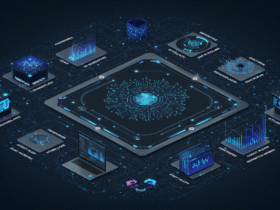
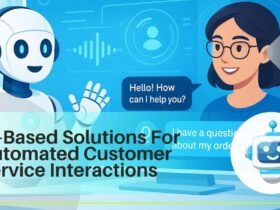








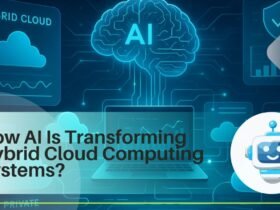
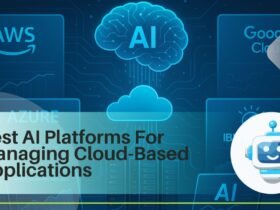



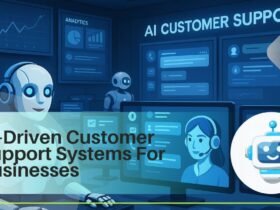

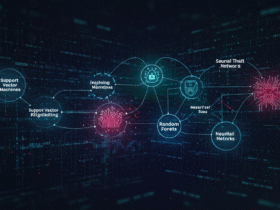




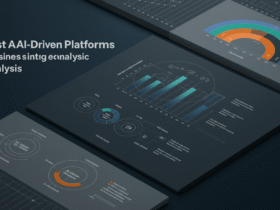




1 Comment